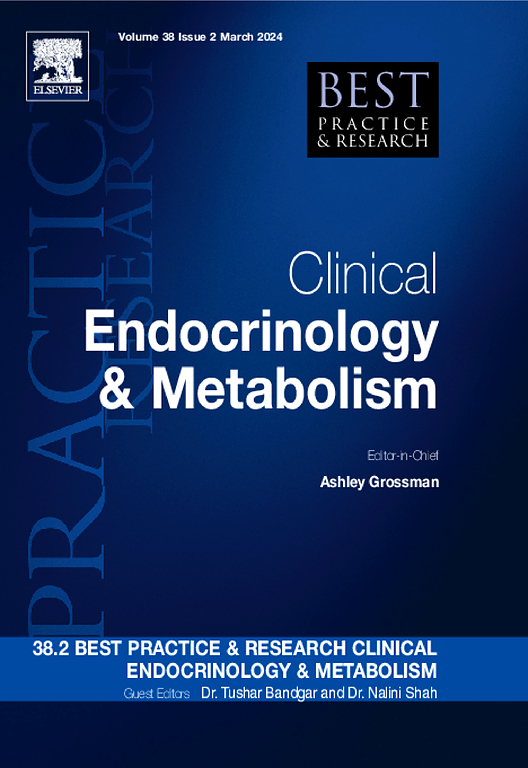MAML3融合调节血管和免疫肿瘤微环境,并使嗜铬细胞瘤和副神经节瘤具有高转移风险。
IF 6.1
1区 医学
Q1 ENDOCRINOLOGY & METABOLISM
Best practice & research. Clinical endocrinology & metabolism
Pub Date : 2024-12-01
DOI:10.1016/j.beem.2024.101931
引用次数: 0
摘要
嗜铬细胞瘤和副神经节瘤是罕见的神经内分泌肿瘤。约 20-25% 的患者会发生转移,因此迫切需要预后标志物和治疗分层策略。MAML3融合的存在与转移风险的增加有关,但无论是疾病进展的基本过程,还是可靶向的薄弱环节,都没有得到解决。我们汇编了一个包含850名患者的队列,显示融合发生率为3.65%,是迄今为止报告的最大的MAML3阳性系列。虽然 MAML3 融合主要导致单个嗜铬细胞瘤,但我们也观察到体细胞后杂交事件,导致同一患者出现多个肿瘤。MAML3-肿瘤显示神经内分泌向间质转化标志物、MYC-靶点和血管生成相关基因的表达增加,从而导致具有独特血管和免疫特征的独特肿瘤微环境。重要的是,我们的研究结果发现了MAML3肿瘤除Wnt通路失调外的其他特殊弱点,如丰富的血管网络以及PD-L1和CD40的过度表达,从而提出了潜在的治疗靶点。本文章由计算机程序翻译,如有差异,请以英文原文为准。
MAML3-fusions modulate vascular and immune tumour microenvironment and confer high metastatic risk in pheochromocytoma and paraganglioma
Pheochromocytomas and paragangliomas are rare neuroendocrine tumours. Around 20–25 % of patients develop metastases, for which there is an urgent need of prognostic markers and therapeutic stratification strategies. The presence of a MAML3-fusion is associated with increased metastatic risk, but neither the processes underlying disease progression, nor targetable vulnerabilities have been addressed. We have compiled a cohort of 850 patients, which has shown a 3.65 % fusion prevalence and represents the largest MAML3-positive series reported to date. While MAML3-fusions mainly cause single pheochromocytomas, we also observed somatic post-zygotic events, resulting in multiple tumours in the same patient. MAML3-tumours show increased expression of neuroendocrine-to-mesenchymal transition markers, MYC-targets, and angiogenesis-related genes, leading to a distinct tumour microenvironment with unique vascular and immune profiles. Importantly, our findings have identified MAML3-tumours specific vulnerabilities beyond Wnt-pathway dysregulation, such as a rich vascular network, and overexpression of PD-L1 and CD40, suggesting potential therapeutic targets.
求助全文
通过发布文献求助,成功后即可免费获取论文全文。
去求助
来源期刊
CiteScore
11.90
自引率
0.00%
发文量
77
审稿时长
6-12 weeks
期刊介绍:
Best Practice & Research Clinical Endocrinology & Metabolism is a serial publication that integrates the latest original research findings into evidence-based review articles. These articles aim to address key clinical issues related to diagnosis, treatment, and patient management.
Each issue adopts a problem-oriented approach, focusing on key questions and clearly outlining what is known while identifying areas for future research. Practical management strategies are described to facilitate application to individual patients. The series targets physicians in practice or training.

 求助内容:
求助内容: 应助结果提醒方式:
应助结果提醒方式:


